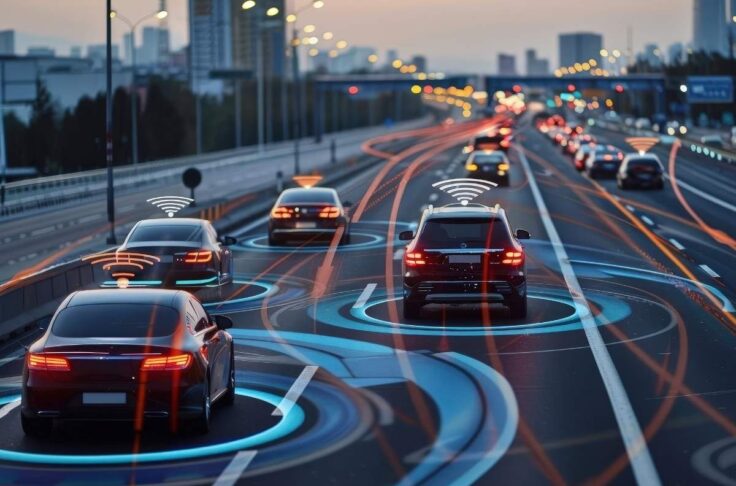Webinar Recap: User Insights on AI-Powered Vehicle Damage Detection
Summary
A recap of our webinar on AI-powered damage detection featuring Daantje Rijnja, Damage Detection Specialist at MyWheels, Dr. Tom Athoff, Managing Director at carvaloo, and Rudy Six, CEO at INVERS Mobility Services. The panel discussed results and lessons learned from implementing AI-powered damage detection in a car sharing fleet.
Accidents happen, and vehicle damage is an inevitable challenge in every car sharing and car rental fleet. While some damages are easy to detect with the naked eye, many remain unnoticed for a long time. Unattended damages lead to costly repairs and can jeopardize customer safety. Fortunately, carvaloo has developed an innovative AI-powered damage detection system to tackle the issue of hidden damages and help fleet operators stay on top of their vehicles’ conditions.
Earlier this year, we invited Jakob Otting, Head of Sales at carvaloo, for a deep dive into the technology behind the Damage Detection module. Jakob provided examples of how the technology detected hidden damages, and how it integrates with INVERS’s CloudBoxx. This time, we invited both carvaloo and MyWheels to explore user insights and real-world applications of the system.
Table of Contents
New solutions for a growing fleet
MyWheels, a car sharing company based in the Netherlands, started in 1993 as a neighbor’s collective. Users shared cars with their community because they believed in a more sustainable future with fewer cars. Today, MyWheels is a modern, app-based shared mobility provider with 200,000 users and 3,000 cars across Europe. MyWheels initially relied on drivers to report damages before and after each ride. This approach left significant gaps in detection, especially for underbody and sensor-related damages not visible to the naked eye. Recognizing the need for a more reliable and efficient solution, MyWheels turned to AI-powered damage detection technology. This tech provided MyWheels with accurate data in real-time, allowing them to identify and address damages promptly.

The hidden costs of vehicle damages
Daantje emphasized that the financial impact of vehicle damages extends beyond repair bills. She explained how damages lead to significant downtime, affecting fleet availability and revenue. Additionally, damages can reduce vehicle resale value and increase compensation costs for injuries resulting from accidents. The impact on the company’s reputation is another critical cost, as is the possibility of damaging a customer relationship with a false accusation.”You have to have a level of certainty before you reach out to a client and ask them about the damage or their driving behavior.”- commented Daantje.
Daantje also referenced James Wilson and George Kelling’s 1982 “broken windows” theory, explaining how a damaged vehicle can encourage further neglect.
AI-powered damage detection acts as a virtual passenger, constantly gathering real-time data on incidents. This technology gives fleet operators a clear and accurate understanding of all damage-related costs and enables them to manage their fleets more effectively and sustainably.
Boosting traceability and accountability with AI-powered damage detection
Dr. Tom Athoff from carvaloo highlighted that identifying the perpetrators of vehicle damage is a critical challenge in fleet management. Without advanced technology, carshare operators can identify the responsible parties only 23% of the time. This lack of traceability leads to significant financial losses, as operators often bear the repair costs themselves. Tom added that “finding the right perpetrator and clearly identifying the right person to claim the damage is just the beginning. The additional context information and evidence we provide make it possible to not only identify but also hold the responsible parties accountable.”
The situation is better for car rental operators due to mandatory vehicle inspections after each return. However, they still face challenges in determining the specifics of the damage. Carvaloo’s AI technology addresses these issues by providing detailed, real-time data on incidents. This information helps operators hold responsible parties accountable, thus improving traceability.

Lessons learned from the pilot phase
Tom and Rudy Six provided valuable insights on implementing and testing AI-powered damage detection systems. Rudy emphasized the importance of conducting a well-structured pilot to gather accurate data and assess the system’s effectiveness. “The way to actually see the value of the system is to have damages occur. The very thing that we like to not have happen in general, we actually need to see it happening in order to see the value of the system.” – Rudy added.
Operators need incidents to analyze to test the Damage Detection Module. Therefore, an ideal pilot would include around 100 vehicles over three months. This timeframe and fleet size allow for sufficient incidents, providing a robust data set for evaluating the system.
Dr. Tom Athoff added insights into the frequency and nature of incidents in car sharing vehicles. By following these guidelines, MyWheels successfully piloted the technology, significantly enhancing their damage detection capabilities. The results from the pilot were impressive: MyWheels increased incident traceability from 30% to 93% and improved invoice claims to 70%. Both insurance companies and customers welcomed the AI technology, recognizing its potential to enhance transparency, accountability, and overall fleet safety.

More from the webinar
The implementation of AI not only enhanced the safety and reliability of MyWheel’s fleet but also supported its commitment to providing the best possible customer experience. The insights shared in this webinar underscore the transformative potential of AI-powered damage detection in the car sharing and car rental industries. By leveraging advanced technology, operators can significantly enhance traceability, reduce costs, and improve fleet safety. The success stories and real-world applications presented by MyWheels and carvaloo provide a compelling case for adopting these innovative solutions.
You can watch the full webinar recording here if you missed the live session or want to revisit the discussion. For more information on AI-powered damage detection and other fleet management solutions, visit the INVERS blog for additional resources and updates.
Want to be notified about future webinars on damage detection, fleet management, and car sharing? Sign up for our news updates!


